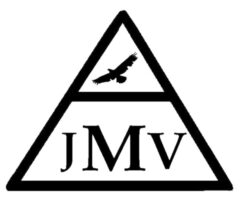Victor Perez, Jamille Pasco
Cite
Perez V, Pasco J. Identifying asynchronies: Delayed triggering. J Mech Vent 2023; 4(2):97-100.
Abstract
Patient-ventilator asynchronies can occur at any phase throughout the respiratory cycle. Because it has been associated with patient outcomes, it is important to recognize and address these asynchronies. Bedside interpretation of air flow and airway pressure waveforms are helpful for recognizing patient–ventilator asynchronies and optimizing ventilator settings.
Patient effort is sensed by either a drop in circuit pressure (pressure trigger) or circuit bias flow (flow trigger). Triggering delay is the time interval between the start of the neural and mechanical inspiration. Triggers must be sensitive enough to recognize patient effort to avoid imposing an additional load but not too sensitive to avoid auto-triggering.
Despite improvements in triggering technology, triggering asynchronies continue to occur and are manifest, among others, by delayed triggering.
Keywords
Patient-Ventilator asynchrony, patient effort, trigger, delayed triggering.
References
| 1. Ranieri VM, Squadrone V, Appendini L, et al. Patient-ventilator interaction. In Vincent JL, Abraham E, Moore FA, Kochanek PM, Fink MP. Textbook of critical care. 7th ed. Philadelphia: Elsevier; 2017: 366-372. | |||
| 2. Vitrag HS, Samanta A, Ray S. Patient-ventilator asynchrony: etiology and solutions. IJCP 2021; 31(8):714-724. | |||
| 3. Sassoon CS. Mechanical ventilator design and function: the trigger variable. Respir Care 1992; 37(9):1056-1069. PMID: 10145700 | |||
| 4. Marini JJ, Capps JS, Culver BH. The inspiratory work of breathing during assisted mechanical ventilation. Chest 1985; 87(5):612-618. https://doi.org/10.1378/chest.87.5.612 PMid:3987373 | |||
| 5. Nilsestuen JO, Hargett KD. Using ventilator graphics to identify patient-ventilator asynchrony. Respir Care 2005; 50(2):202-234. PMID: 15691392 | |||
| 6. Mirabella L, Cinnella G, Costa R, et al. Patient-ventilator asynchronies: clinical implications and practical solutions. Respir Care 2020; 65(11):1751-1766. https://doi.org/10.4187/respcare.07284 PMid:32665426 | |||
| 7. Sassoon CS. Triggering of the ventilator in patient-ventilator interactions. Respir Care. 2011; 56(1):39-51. https://doi.org/10.4187/respcare.01006 PMid:21235837 | |||
| 8. Gilstrap D, Davies J. Patient-ventilator interactions. Clin Chest Med 2016; 37(4):669-681. https://doi.org/10.1016/j.ccm.2016.07.007 PMid:27842747 | |||
| 9. Georgopoulos D, Prinianakis G, Kondili E. Bedside waveforms interpretation as a tool to identify patient-ventilator asynchronies. Intensive Care Med 2006; 32:34-47. https://doi.org/10.1007/s00134-005-2828-5 PMid:16283171 | |||
| 10. Chatburn R, Mireles-Cabodevila E. 2019 Year in Review: Patient-ventilator synchrony. Resp Care 2020; 65(4):558-572. https://doi.org/10.4187/respcare.07635 PMid:32213603 | |||
| 11. Murata S, Yokoyama K, Sakamoto Y, et al. Effects of inspiratory rise time on triggering work load during pressure-support ventilation: a lung model study. Respir Care 2010; 55(7):878-884. PMID: 20587100 | |||
| 12. Mireles-Cabodevila E, Siuba M, Chatburn R. A taxonomy for patient-Ventilator interactions and a method to read ventilator waveforms. Respir Care 2022; 67(1):129-148. https://doi.org/10.4187/respcare.09316 PMid:34470804 | |||
| 13. Thille AW, Rodriguez P, Cabello B, et al. Patient-ventilator asynchrony during assisted mechanical ventilation. Intensive Care Med 2006; 32:1515-1522. https://doi.org/10.1007/s00134-006-0301-8 PMid:16896854 | |||
| 14. Younes M, Kun J, Webster K, et al. Response of ventilator-dependent patients to delayed opening of exhalation valve. Am J Respir Crit Care Med 2002; 166: 21-30. https://doi.org/10.1164/rccm.2107143 PMid:12091166 | |||
| 15. MacIntyre NR, Cheng KC, McConnell R. Applied PEEP during pressure support reduces the inspiratory threshold load of intrinsic PEEP. Chest. 1997; 111:188-193. https://doi.org/10.1378/chest.111.1.188 PMid:8996015 | |||
| 16. Nava S, Bruschi C, Rubini F, et al. Respiratory response and inspiratory effort during pressure support ventilation in COPD patients. Intensive Care Med 1995; 21:871-879. https://doi.org/10.1007/BF01712327 PMid:8636518 |
